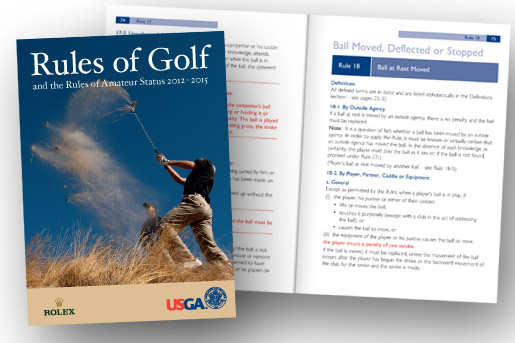Golf's rules are changing, for the better.
The USGA and R&A formally announced the newest edition of the Rules of Golf, which are updated every four years in a collaborative effort between the game's two governing bodies.
The biggest change to the Rules is the one we've known about: the ban of the anchored stroke, which has been in response to multiple players winning major championships with an anchored belly or long putter, starting with Keegan Bradley at the 2011 PGA Championship. Webb Simpson won the 2012 U.S. Open, presented by the USGA, with an anchored stroke, while Ernie Els took the R&A's Open Championship that same year with a belly putter. Those wins were thought to be the straws that broke the governing bodies' backs, respectively, on allowed the anchored stroke. The ban is covered under the new Rule 14-1b, with the penalty being two strokes in medal play and loss of hole in match play.
Three other big changes have been made, with the biggest related to Rule 6-6d, which handles the disqualification penalty for submitting an incorrect scorecard. Under the new edition of the Rules of Golf, a player will not be disqualified for returning a "lower score for a hole than actually taken as a result of failing to include penalty strokes that the player did not know were incurred before returning the score card." Fundamentally, this is the Phone-In DQ Exception, meaning that, if a spectator or other player makes an official or player aware of a penalty they unknowingly incurred after they've signed for their score that the offending player won't be disqualified. Instead, the penalty will be what should apply under the Rule breached and an additional two-stroke penalty for the botched scorecard. However, in all other cases where a lower score is turned in, that player will be disqualified.
There's been an update to Rule 18-2b, which addresses when a ball moves after address. The rule has been modified to withdraw the penalty that was previously automatically assigned when the ball moved after a player addressed it. A player is no longer assumed to have caused the ball to move. However, a one-stroke penalty will still be applied if the facts show the player caused the ball to move.
Finally, there's been a change to the rule used to penalize players for a single use of impermissible artificial devices or equipment, covered under Rule 14-3. The penalty has been reduced from disqualification to the loss of hole in match play or two strokes in medal play. If a player breaches the rule a second time, then they'll be disqualified.
The changes take effect on Jan. 1, 2016.

